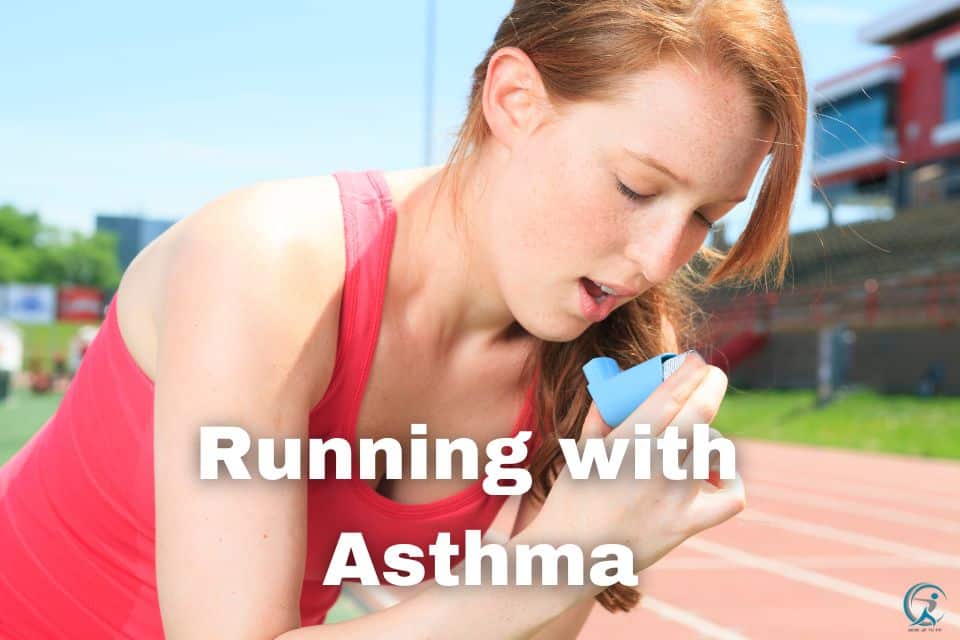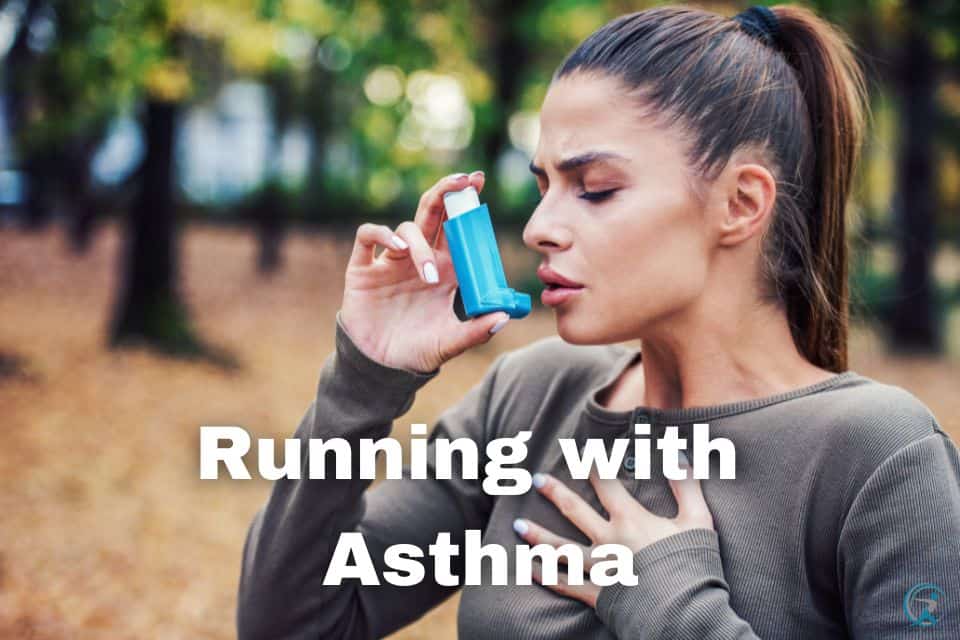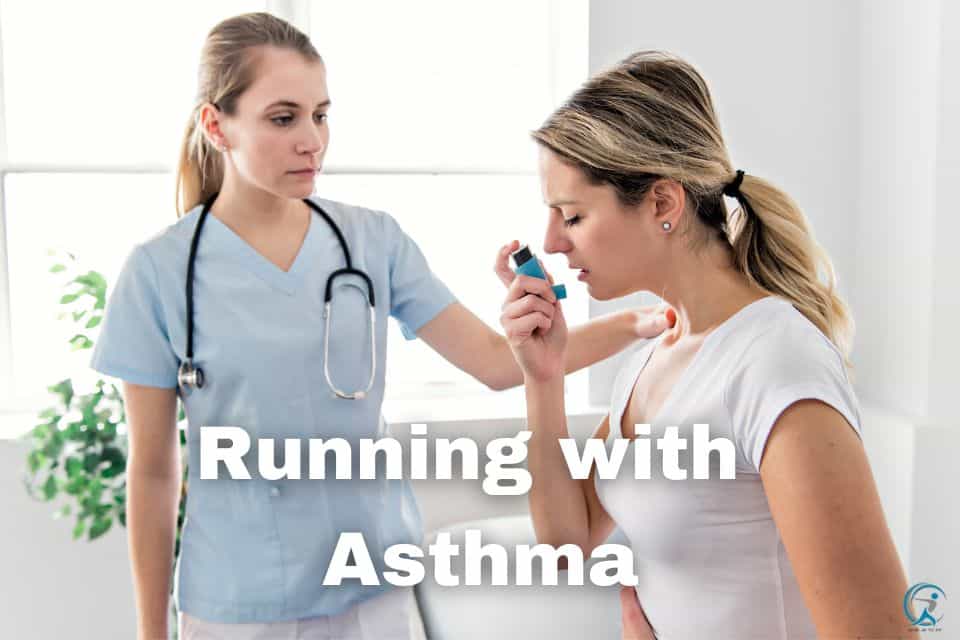Did you know that up to 90% of people with asthma experience worsened symptoms during exercise? Symptoms can start within just 3 minutes of physical activity. However, with proper management and the right strategies, individuals with asthma can safely enjoy running and reap the benefits of regular exercise.
Exercise can make asthma symptoms worse. These symptoms include wheezing and shortness of breath. This is called EIB, which stands for exercise-induced bronchoconstriction. It starts fast, peaks in 10–15 minutes, and goes away in about an hour1. EIB is common in people with asthma. It causes the airway to narrow during physical activity. However, running can also improve lung function. It helps with better airflow, reduces inflammation, and boosts overall health.

Key Takeaways
- Exercise-induced bronchoconstriction (EIB) is a common problem for people with asthma. Symptoms often show up within 3 minutes of starting physical activity.
- Aerobic exercises like running can benefit those with asthma. They can improve lung function, decrease inflammation, and boost overall health.
- It’s important to take the right precautions. Use rescue inhalers if you need them. Check the air quality regularly. Include warm-up and cool-down exercises in your routine.
- Breathing techniques can help manage symptoms too. Pursed lip breathing and diaphragmatic breathing improve airflow and expand lung capacity.
- Talk to your doctor to make an asthma action plan. This plan will show you how to use your inhaler. It will help you recognize symptoms. It will tell you when to get medical help. This keeps running with asthma safe and effective.
Check Out: Athletes with Asthma: 6 Ways to Overcome Symptoms
Understanding exercise-induced bronchoconstriction
Exercise can trigger asthma in some people. This condition is called exercise-induced bronchoconstriction (EIB). EIB makes your airways narrow during physical activity. When this happens, you may cough, wheeze, or feel short of breath. You can have EIB even if you don’t have asthma.
What is exercise-induced bronchoconstriction?
EIB is a temporary narrowing of the airways during or right after exercise3. This can cause coughing, wheezing, and shortness of breath. These symptoms usually start within 5 to 20 minutes of exercise3. Knowing what causes EIB helps in managing it and staying active.
Symptoms and triggers
Symptoms of EIB include wheezing, coughing, and chest tightness during exercise3. Dry air, cold air, and pollution can make EIB worse2. Activities like running, swimming, and soccer can also trigger these symptoms2.
Risks and precautions
Not treating EIB can lead to serious breathing problems, especially for those with asthma2. But, with the right steps, most people with EIB can safely do sports3. This means using a quick-relief inhaler before exercise and avoiding triggers3. Top athletes should talk to doctors and sports groups about managing their EIB4.
Knowing about exercise-induced bronchoconstriction is key for people with asthma, or EIB. By understanding symptoms, triggers, and how to prevent them, you can stay active and healthy234.
Check Out: Why Detoxing Your Body Really Matters
Preparing for a Safe and Effective Run




If you have asthma and love to run, you need to be careful before you start. First, talk to your asthma doctor5. They can give you advice that fits your asthma and help you make a plan for running safely.
Consulting with your doctor before beginning a running regimen is essential to ensure personalized guidance and safety measures for individuals with asthma.
Your doctor knows a lot about managing asthma while running. They can tell you how to use your daily inhalers and rescue inhalers6. This knowledge is crucial for maintaining safety and optimizing the experience of running with asthma, ensuring effective management of symptoms and overall well-being.
Create an asthma action plan.
Work with your doctor to make an asthma action plan5. This plan will cover things like using daily inhalers and when to use your rescue inhaler6. Having this plan makes you feel ready and confident to start running.
Warm-up and cool-down routines
For runners with asthma, warming up and cooling down are very important. Drastic temperature changes can trigger symptoms5. Start with gentle warm-up exercises5 and end with cool-down routines5. These help your body adjust and lower the chance of an asthma attack.
By doing these important steps, you can run safely and effectively, even with asthma. With the right preparation and advice from your doctor, you can enjoy the benefits of running7 and keep your asthma under control567.
Running with Asthma: Tips and Strategies
Running with asthma can seem tough, but you can do it with the right tips. It’s important to think about the weather and air quality when you run. Stay away from extreme weather, high pollen, and pollution to avoid asthma attacks. When running with asthma, it’s also crucial to listen to your body and know when to slow down or stop. tab
Check the weather conditions and air quality.
Always check the weather and air quality before running8. Running inside when pollen is high is a good idea for people with asthma8. Adding indoor workouts to your plan helps keep your asthma under control. Also, warming up before running is key to managing asthma symptoms8.
Avoid triggers and allergens.
Knowing what triggers your asthma is key to running safely9. Different types of asthma have different triggers, so work with your doctor to figure out yours9. Pollution, both inside and outside, can make asthma worse, especially in kids9. Pay attention to the allergens around you to lower the chance of an asthma attack.




Carry and use rescue inhalers.
Always carry your rescue inhaler when you run9. Good breathing habits are important for runners with asthma to avoid making symptoms worse8. Know when to use your inhaler or stop running to keep symptoms from getting worse9. Having a comprehensive plan for managing your asthma is essential for proactively addressing symptoms and ensuring a safe and successful running experience.
With these tips, people with asthma can enjoy running safely. Remember, being careful and taking steps to manage your symptoms lets you run with confidence8910.
Check Out: Ranking the Best Fish Oil Supplements




Breathing Techniques for Asthmatic Runners
Certain breathing techniques can help asthmatic runners manage their symptoms11. Techniques like pursed lip breathing, diaphragmatic breathing, and Buteyko breathing can ease symptoms and boost breathing.
Pursed Lip Breathing
Pursed lip breathing slows down your breathing and increases oxygen intake when you feel short of breath11. You breathe in through your nose and out slowly through pursed lips. This helps control airflow and avoid breathing too fast.
Diaphragmatic Breathing
Diaphragmatic breathing, or belly breathing, makes your airways and chest expand by moving your breath from chest to belly11. It’s great for taking in more oxygen during intense activities like running12.
Buteyko Breathing
Buteyko breathing, created by Professor Konstantin Buteyko, makes you breathe through your nose instead of your mouth13. It involves short pauses in breathing. These pauses can help balance oxygen and carbon dioxide in your body and calm your airways.
It’s important to talk to your healthcare provider before trying these breathing techniques11. They should not replace your asthma medicine. They should not replace your asthma medicine. Adding these techniques to your running can improve your breathing and performance.
Breathing Techniques for Asthmatic Runners
Certain breathing techniques can help asthmatic runners manage their symptoms11. Techniques like pursed lip breathing, diaphragmatic breathing, and Buteyko breathing can ease symptoms and boost breathing.
Pursed Lip Breathing
Pursed lip breathing slows down your breathing and increases oxygen intake when you feel short of breath11. You breathe in through your nose and out slowly through pursed lips. This helps control airflow and avoid breathing too fast.
Diaphragmatic Breathing
Diaphragmatic breathing, or belly breathing, makes your airways and chest expand by moving your breath from chest to belly11. It’s great for taking in more oxygen during intense activities like running12.
Buteyko Breathing
Buteyko breathing, created by Professor Konstantin Buteyko, makes you breathe through your nose instead of your mouth13. It involves short pauses in breathing. These pauses can help balance oxygen and carbon dioxide in your body and calm your airways.
It’s important to talk to your healthcare provider before trying these breathing techniques11. They should not replace your asthma medicine. They should not replace your asthma medicine. Adding these techniques to your running can improve your breathing and performance.
FAQs
Q: Can I still participate in competitive running events with asthma?
A: Yes, many athletes with asthma compete successfully at high levels. Work closely with your doctor to develop a management plan that allows you to train and compete safely.
Q: How often should I use my rescue inhaler when running?
A: Follow your doctor's recommendations, but typically, using your rescue inhaler 15-30 minutes before exercise can help prevent EIB symptoms.
Q: Are there specific types of running that are better for people with asthma?
A: Interval training or alternating between high and low-intensity running can be beneficial, as it allows for recovery periods between intense efforts.Conclusion
Running with asthma is not only possible but can be highly beneficial when done safely and with proper management. By understanding EIB, preparing adequately, implementing effective strategies, and using appropriate breathing techniques, individuals with asthma can enjoy the numerous health benefits of running while keeping their symptoms under control.
Remember to always consult with your healthcare provider before starting a new exercise routine and to regularly review and update your asthma action plan. With the right approach, running can become an enjoyable and rewarding part of your asthma management strategy.
Source Links
- https://www.healthline.com/health/asthma/running-with-asthma
- https://www.mayoclinic.org/diseases-conditions/exercise-induced-asthma/symptoms-causes/syc-20372300
- https://www.hopkinsmedicine.org/health/conditions-and-diseases/asthma/asthma-and-exercise
- https://acaai.org/asthma/types-of-asthma/exercise-induced-bronchoconstriction-eib/
- https://www.baptisthealth.com/blog/allergy–asthma/how-to-run-with-asthma
- https://www.medicalnewstoday.com/articles/running-with-asthma
- https://marathonhandbook.com/running-with-asthma/
- https://therunexperience.com/how-to-breathe-while-running-with-asthma/
- https://www.runnersworld.com/health-injuries/a39138566/what-to-know-about-running-with-asthma/
- https://www.webmd.com/asthma/exercising-asthma
- https://www.uclahealth.org/news/article/how-use-breathing-exercises-improve-asthma
- https://www.lung.org/blog/breathing-basics-for-runners
- https://gaapp.org/diseases/asthma/breathing-exercises-and-techniques-for-asthma/
Alex is a fitness aficionado, empowers others towards healthier, active lives through small, sustainable changes for lasting results. Visit Gearuptofit.com for insightful tips and resources to enrich a balanced lifestyle.
